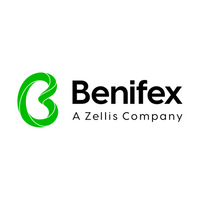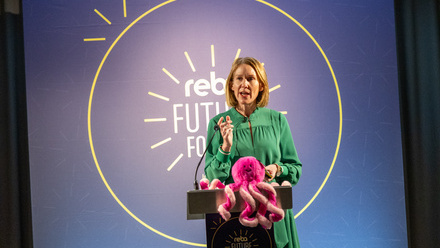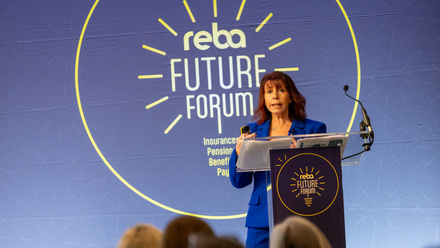Inside IKEA’s pay transparency journey: A guide for reward leaders
In his session, he shared four core areas that he believes will become non-negotiable for reward teams under the EU Pay Transparency Directive:
1. Factor-based job evaluation
The directive is putting structure back in the spotlight – and that includes formal job evaluation frameworks. While many organisations have preferred looser job slotting methods, factor-based evaluation is making a come-back.
IKEA sees this as a necessary step to ensure consistency and comparability, and the foundation for meaningful equal pay analysis.
“The reason why I say it’s the revival of the dead is because practitioners like myself don’t necessarily like job factor-based evaluation. We do job slotting, which is similar, but not exactly the same,” said Karavidas.
“So, it’s bringing us a step back, if you ask me. But again, I welcome that challenge to ensure that we have the right infrastructure to show that we’re doing the right job evaluation.”
2. A clearly articulated pay philosophy
A defined pay philosophy is now an operational requirement. Under the Directive, employers must clearly articulate how they set pay, how progression works, and why certain pay outcomes occur. Karavidas emphasized the growing expectation for companies to explain their approach to employees and external stakeholders alike.
“[Pay philosophy] shifts the balance of power from the company to the employee. Now we need to defend why, not the other way around. And I think it is a very strong message, and it pushes us to the right direction quickly” said Karavidas.
For reward leaders, this means moving to a philosophy that’s consistent, transparent, and defensible.
3. The right to pay information
The directive empowers employees with the right to request pay information, which dramatically shifts the balance of power.
Line managers will often become the first point of contact when employees ask “why.” IKEA’s approach has been to invest heavily in manager training, equipping them with the knowledge to answer pay-related questions confidently and accurately.
“We train managers in equal pay, we try to explain why we do equal pay analysis, why we want them to help us prevent gaps,” said Karavidas.
“And this is our attempt to hit the core reason why gaps are created. If we manage to shift that, we manage to close the gap for the long term, not just for the short term.”
4. External reporting requirements
At IKEA, this means going beyond surface-level metrics with a detailed, actionable pay analysis. By examining gaps at the most granular levels of their job architecture, they’re able to target root causes instead of relying on a single, headline figure.
For Karavidas, public reporting is not just compliance – it’s proof of accountability. As he put it: “Even though there is no shaming and blaming, peer pressure always works.”
How IKEA is embedding equal pay and transparency
IKEA built its own pay analysis methodology, starting with a clear definition of “equal work”. By assessing pay equity at the most detailed level – combining job role and job grade – they ensure like-for-like comparisons.
They then test the data against three parameters:
- Performance: variable pay can legitimately differ when performance does.
- Competence: formal competence assessments help managers evaluate capability within roles.
- Legal constraints: outcomes shaped by collective bargaining or national legislation must still be acknowledged.
This bottom-up approach helps IKEA explain, challenge, and act on unjustified gaps with precision. But even with rigorous analysis and budget to close gaps, the same issues kept resurfacing. Why?
“Because we don’t make pay decisions at one point. We make them throughout the employee lifecycle. Every pay decision is an opportunity to either increase or reduce the gap,” said Karavidas.
That’s the real lesson: transparency isn’t a one-off project. It’s about embedding fairness into every pay decision, every day. Complete pay transparency may never be fully achievable, but taking action towards it is what matters.
A local and global approach to transparency
IKEA is taking a country-by-country approach to transparency – prioritizing local legislation and maturity before considering a global policy. The goal is to meet mandatory requirements while building broader transparency through education, communication, and progressive rollout.
Karavidas called it a conscious choice to drive commitment over compliance, starting local and scaling with insight.
“We went for the nuanced. We want to say, let’s try country by country first… and then as we get a bit wiser, we might decide to lift it up as a company global-wide policy,” he said.
Transparency at IKEA includes:
- Sharing total reward statements with all employees
- Publishing pay ranges or minimums in job ads (and making this visible internally)
- Showing pay information to specific audiences based on need
- Equipping line managers to answer tough questions with confidence
To support this, IKEA is rolling out a global learning solution: four short videos on pay philosophy, structures, and communication, backed by in-person sessions where possible.
Looking to the future of reward
“Equal pay and pay transparency are not about compliance – not really – compliance is the minimum of what we can do. It’s about doing the right thing,” said Karavidas.
IKEA proves that compliance and culture can work together. By investing in infrastructure, manager capability, and clear communication, they’re creating a fairer, more consistent pay experience – and reinforcing their values along the way.
The takeaway for reward leaders? If you haven’t nailed the basics – job architecture, pay philosophy, pay-setting principles – now’s the time. When employees start asking questions, you need to have the answers.
And as Konstantinos reminded the audience: “Train your leaders. They’re the best people to do the job.”
For more information about the EU Pay Transparency Directive, read Benifex's blogs:
- The EU Pay Transparency Directive: A briefing for reward leaders;
- The EU Pay Transparency Directive: Why global organizations are using total reward statements as the core pillar of their strategy; and
- What we do and don’t know about the EU Pay Transparency Directive.
Supplied by REBA Associate Member, Benifex
The home of award-winning employee benefits, reward, recognition, & communications.








